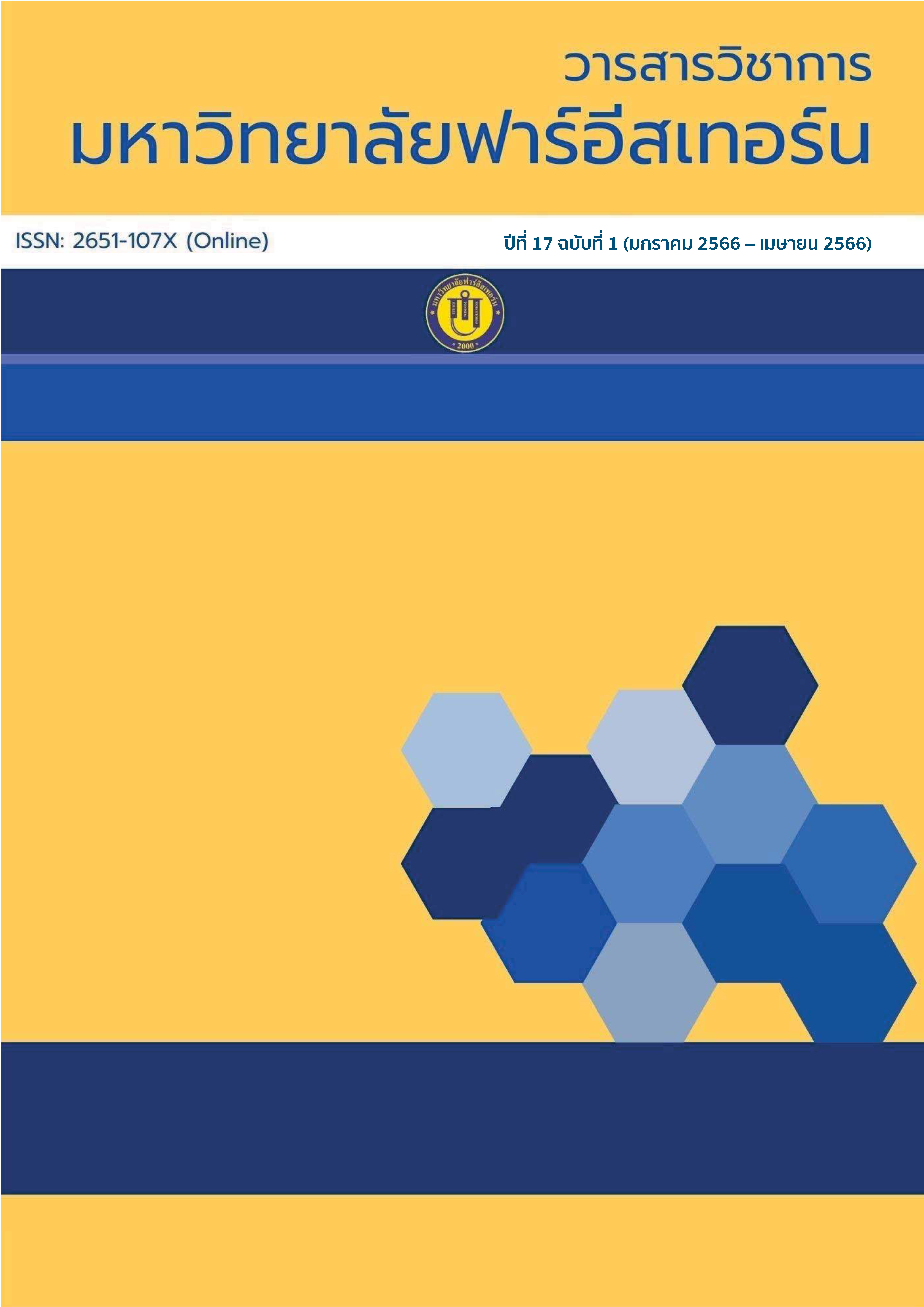Guidelines for Designing Video for Learning for Marginal Learners of Chiang Mai Provincial Office of the Non-formal and Informal Education
Main Article Content
Abstract
This research aimed to find out the guidelines for designing video for learning that is applicable for marginal learners under Chiang Mai Provincial Office of the Non-formal and Informal Education. The research participants were 7 university teachers who participated in the research project “Designing and Developing of Learning and Teaching Models for Enhancing Competency of Non-formal and Informal Learners” that was part of the research program “Digital Social Support System for Learning Essential Skills of Non-formal Learners in Chiang Mai Border Area Fiscal Year 2021”. The data collection instrument was a semi-structured interview, and the data from the interview were analyzed by thematic analysis. The results of the study revealed that the guidelines for designing video for learning for marginal learners under Chiang Mai Provincial Office of the Non-formal and Informal Education were significantly classified into two parts that were 1) the process for designing the video for learning consisted of two steps: 1.1) the analyzing of the contents and learners and 1.2) the creating of a storyboard, and 2) the factors that influenced the designing of video for learning were divided into two factors: 2.1) the internal factor such as the limitations of time for video producing, technology capability, and experience in video teaching and 2.2) the external factor such as the lack of support in producing and utilizing the video for learning. The results of the study can be the preliminary guidelines for designing videos for learning for learners with diversity and limitations in educational opportunities.
Article Details

This work is licensed under a Creative Commons Attribution-NonCommercial-NoDerivatives 4.0 International License.
1. Any views and comments in the Journal of Social Innovation and Lifelong Learning are the authors’ views. The editorial staff have not to agree with those views and it is not considered as the editorial’s responsibility.
2. The responsibility of content and draft check of each article belongs to each author. In case, there is any lawsuit about copyright infringement. It is considered as the authors’ sole responsibility.
3. The article copyright belonging to the authors and The Far Eastern University are copyrighted legally. Republication must be received direct permission from the authors and The Far Eastern University in written form.
References
จินดารัตน์ โพธิ์นอก. (2561). องค์ความรู้ ภาษา-วัฒนธรรม โดยสำนักงานราชบัณฑิตยสภา. http://legacy.orst.go.th/wp-content/uploads/2018/07/06132561-โรงเรียนชายขอบ.pdf
ตรีนุช ไพชยนต์วิจิตร และ ภูมิศรัณย์ ทองเลี่ยมนาค. (2563). โรงเรียนชายขอบและความพร้อมในการเรียนทางไกล. https://tdri.or.th/2020/05/covid-29
นรินธน์ นนทมาลย์. (2561). วิดีโอปฏิสัมพันธ์ในการเรียนแบบเปิดในศตวรรษที่ 21. วารสารครุศาสตร์จุฬาลงกรณ์มหาวิทยาลัย, 46(4), 211-227. https://so02.tci- thaijo.org/index.php/EDUCU/article/view/163454
บัลลังก์ โรหิตเสถียร. (2565). นโยบายและจุดเน้นการดำเนินงาน สำนักงาน กศน. ประจำปีงบประมาณ พ.ศ.2565. https://moe360.blog/2022/06/16/policy-and-operational-focus-nfe
ปราวีณยา สุวรรณณัฐโชติ. (2552). การเรียนรู้ร่วมกันบนเครือข่ายคอมพิวเตอร์และการใช้คอมพิวเตอร์สนับสนุนการเรียนรู้ร่วมกัน. วารสารครุศาสตร์, 37(3), 56-58.
ยุพดี หินเธาว์. (2550). การใช้วีดีทัศน์ประกอบการสอนเพื่อพัฒนาความสามารถด้านทักษะการฟังภาษาอังกฤษของนักศึกษาระดับประกาศนีบัตรวิชาชีพชั้นสูง ชั้นปีที่ 1 วิทยาลัยเทคนิคลพบุรี [วิทยานิพนธ์ปริญญามหาบัณฑิต, มหาวิทยาลัยศรีนครินทรวิโรฒ]. http://thesis.swu.ac.th/swuthesis/Tea_Eng_For_Lan(M.A.)/Yoopadee_H.pdf
วรณี เนตรจ๋อย. (2565). ความพึงพอใจของนักศึกษาการศึกษานอกระบบและการศึกษาตามอัธยาศัยที่มีต่อรูปแบบการจัดการศึกษาทางไกลด้วยระบบออนไลน์ของสถาบันการศึกษาทางไกล. วารสารการบริหารนิติบุคคลและนวัตกรรมท้องถิ่น, 8(1), 149-160. https://so04.tci- thaijo.org/index.php/jsa-journal/article/view/251331
วีระเดช คชเสนีย์. (2560, 13 พฤศจิกายน). กศน.ชี้ 17 กลุ่มเป้าหมายผู้ด้อย พลาด และขาดโอกาสทางการศึกษาต้องเข้าถึงบริการ กศน.อย่างมีคุณภาพ. ไทยนิวส์. https://thainews.prd.go.th/th/news/print_news/WNSOC6011130010046
ศิษฏ์ชนา ดวงบาล. (2562). แนวทางการพัฒนาครูด้านการใช้งานเทคโนโลยีสารสนเทศเพื่อการจัดการเรียนการสอน โรงเรียนวัดแม่แก้ดน้อย สังกัดสำนักงานเขตพื้นที่การศึกษาประถมศึกษาเชียงใหม่ เขต ๒. วารสารพุทธศาสตร์ศึกษา, 10(1), 242-253. https://so02.tci- thaijo.org/index.php/JBS/article/view/169720
ศูนย์สื่อสารการศึกษาเพื่อคนพิการ. (2560). กศน.ชี้ 17 กลุ่มเป้าหมายผู้ด้อย พลาด และขาดโอกาสทางการศึกษา ต้องเข้าถึงบริการ กศน.อย่างมีคุณภาพ. http://www.braille-cet.in.th/Braille- new/?q=news-7691
สำนักงานส่งเสริมการศึกษานอกระบบและการศึกษาตามอัธยาศัย. (2553). แนวทางการจัดการเรียนรู้ตามหลักสูตรการศึกษานอกระบบระดับการศึกษาขั้นพื้นฐาน พุทธศักราช 2551. กรุงเทพฯ: รังสีการพิมพ์.
สำนักงานส่งเสริมการศึกษานอกระบบและการศึกษาตามอัธยาศัย. (2563). วิสัยทัศน์ / พันธกิจ. http://www.nfe.go.th/onie2019/index.php/about-us1/vision-mission.html
Brown, R. D., & Raza, K. (2020). Materials development in EALP legal writing courses. Language Teaching Research Quarterly, 15, 33-49. https://papers.ssrn.com/sol3

